It is said that Pak Sheung Chuen was particularly concerned about He Yunchang’s recent physical condition whenever he visited him in Beijing. Presumably, in the eyes of the Hong Kong artist, who is known for his lightness, He Yunchang’s self-destruction will one day be paid in blood.
He Yunchang’s left hand and right hand were cast in concrete for 24 hours; his eighth rib was permanently excised from his left chest; his skin was polished with abrasive cloth in the shape of flower petals, and he cut a-meter-long gash from his neck to his thigh for “Democracy” (called One-meter Democracy by himself). Artistic deeds such as above have left his body in a devastated ruin. It is conceivable that the greeting from Pak Sheung Chuen, one of his peer artists, may also imply a tentative inquiry: what is your next step after your body is unable to withstand extreme challenges?
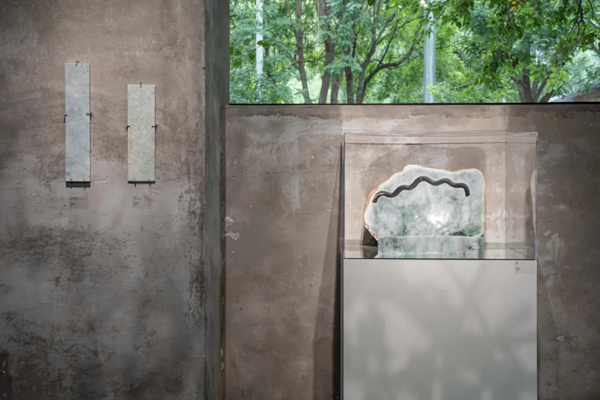
Installation view of He Yunchang: Endless Shadowlands, photo by Yang Li. Courtesy of Wind H Art Center
As a matter of fact, we are accustomed to He Yunchang's pain, which is the punctum of the diatribe he has been dipping into his own blood to write. As opposed to the superficial antagonistic posture and the rhetoric similar to the ideology (such as collectivist, landscape-based symbolic piling), his moving power and logic are in reversing the blade of criticism, condensing, remembering, and rewriting it all with his own body.
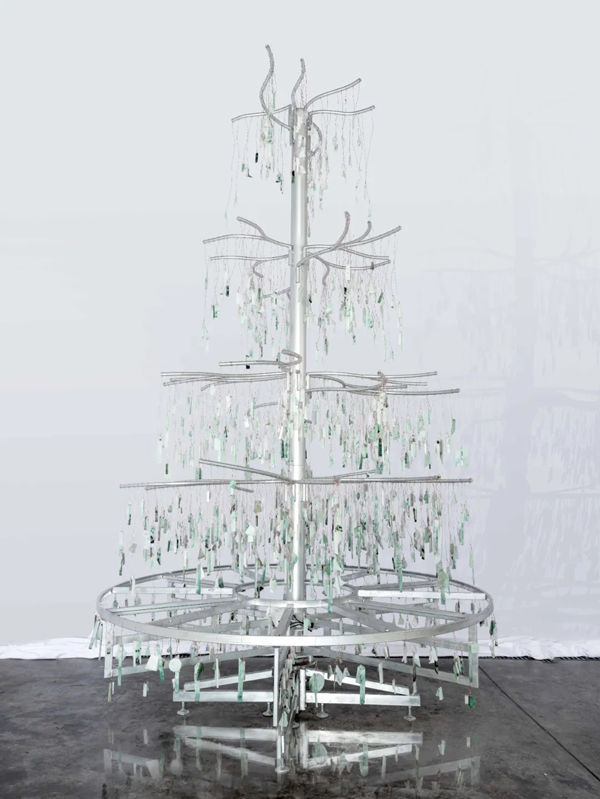
He Yunchang, Three Years Later, 2021, Jade, 645×240×240cm. Courtesy of Wind H Art Center
Because of this, his new exhibition "Endless Shadowlands" places me at a sudden crossroads. When jade, rather than the body, is the vehicle of expression, it apparently implies a self-disintegration and subversion, where the inner chain of logic seems to be broken—he can anticipate such a collective perception and responds to it in advance through the self-preface-like wall: "100,000 words omitted here (Romantic Fiction)”.
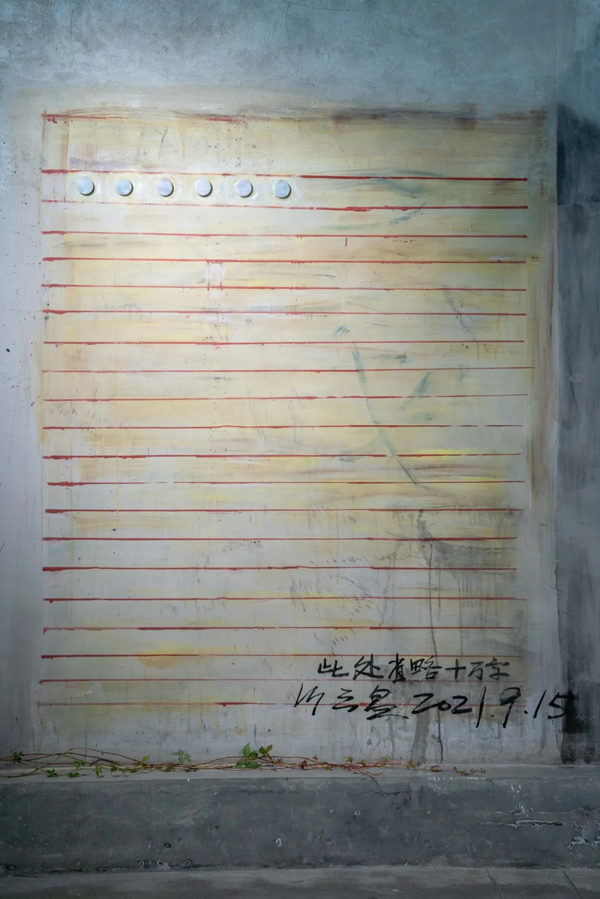
He Yunchang, Romantic Fiction, photo by Yang Li. Courtesy of Wind H Art Center
In my opinion, the exhibition is an extravagant joke made up of nearly 20 tons of jadeite. He invites us to follow his wild imagination, sleepwalking or lying drunk in the jungles of his homeland. We are then enveloped in a web of wild history, legend, and autobiographical memory that he has complied together. This is where the jade comes from, and with its inherent imperfections, cracks, and textures, his imagination fetches an entry point. While his creations partially parody the conventional forms of jade, such as Ruyi (scepter), bracelets, dragons, a more frequent technique he used is to add light lines and arrows to the surface of the jade, turning the "ritual vessel" into a small wall of graffiti or a page of cartoons.
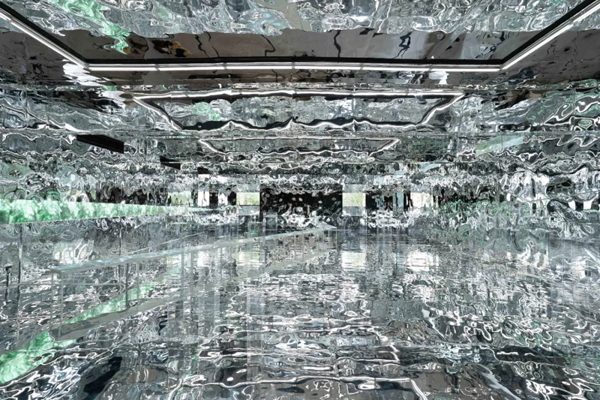
Installation view of He Yunchang: Endless Shadowlands, photo by Yang Li. Courtesy of Wind H Art Center
It seems that He Yunchang is desirable to let us regard him as a country gentleman who is addicted to writing rough poems and indulges in fantasy novels and online games. However, at least here, he demonstrates that he is a man who has a hometown in a distant place. This subtext appears to be that he (and we) still have a place to go back to. If we could no longer discover a sense of home, the possibility of resistance, and the value of action anywhere else, then we should directly go back to the southern hills, devote ourselves to enjoying the mountains and rivers, and be free from the real world. The exhibition "Endless Shadowlands" thus takes on a half-true and half-false presentation, as we appear to see a back of a man riding on a donkey walking in the rain on the post road, reciting “Ah, homeward bound I go!”
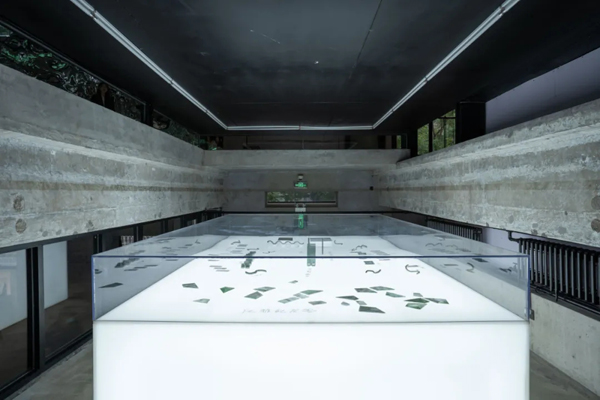
Installation view of He Yunchang: Endless Shadowlands, photo by Yang Li. Courtesy of Wind H Art Center
Nevertheless, if we take the current grim and complicated reality as the background of the exhibition, it does not seem to be a mere joke at all, and even his demonstration of the road to home is a sour dream—can we really go back? Would it be helpful to heal our trauma by imitating the ancient literati tradition of seclusion? "Only enjoy the scenery"? Perhaps, soon it will be difficult for us to even enjoy the scenery.
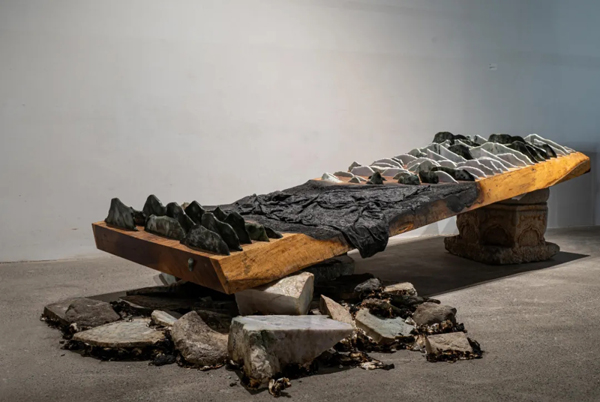
He Yunchang, Pop Song, photo by Yang Li. Courtesy of Wind H Art Center
To expect him continually provide an intense form of challenge is probably a violent way of thinking that requires others to act as sacrificial victims. We sat cynically with relative safety among the audience, knowing very well that this would not change anything, that we would not be able to inhabit his one-meter-long wound to huddle for warmth, and neither could he because it (the wound) had already "healed" and smoothed out. Yet, certainly, as a shocking work, it would remain and intermingle with the part of us that was still firm.
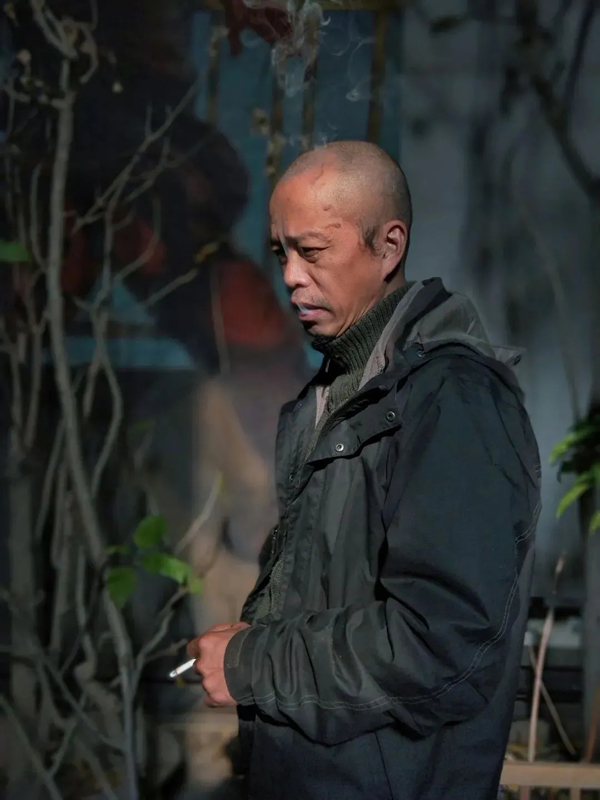
He Yunchang’s portrait. Courtesy of Wind H Art Center
Frankly, I was not used to that hall of mirrors in the exhibition, in which Jade's laying out and mirroring derivation brought me into the kitschy visual centrism. And this is a trap from which he had earlier separated himself instinctively or extremely. Although it is Jade, it should also be present in a slightly somber way, as in the case of "Hall of Falling Stars" or "Pop Song". I thought for him in this way, and suddenly, I recalled a line of my poetry, which seemed to be the most appropriate for him at this moment: “Like a moving ruin seeking its foundation".
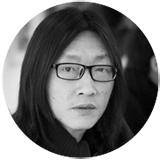
Zhu Zhu, poet, art curator, art critic, was born in September 1969. He won the Second Anne-Kao Poetry Prize, the third Chinese Contemporary Art Critic Award (CCAA) and Hushi Poetry Prizes. He is the author of collection of poems, essays and art reviews, including Franch version poetry ‘Blue Smoke’ (2004, French version, translator: Chantal Chen—Andro), ‘Gray Carnival: Chinese Contemporary Art Since 2000’ (Collection of ‘Imaginist’ by Guangxi Normal University Press in 2013, published by ARTCO Journal in 2016). The English version poetry anthology ‘The Wild Great Wall’ is published in 2018 by Phoneme Media in United States.


